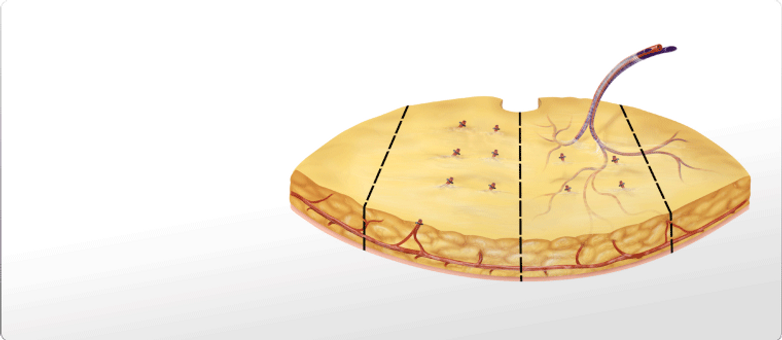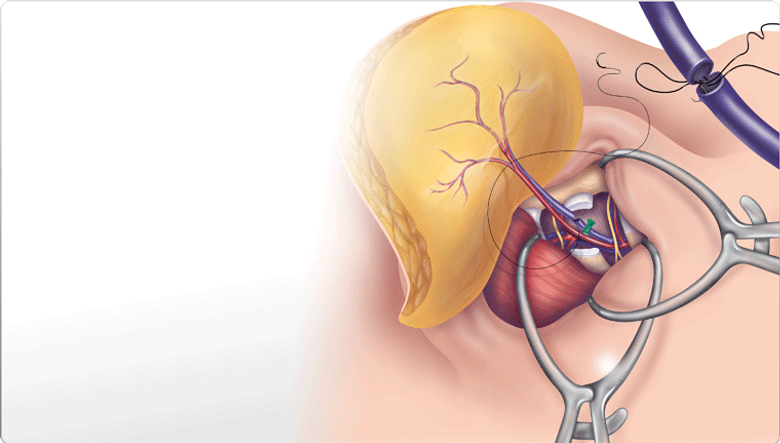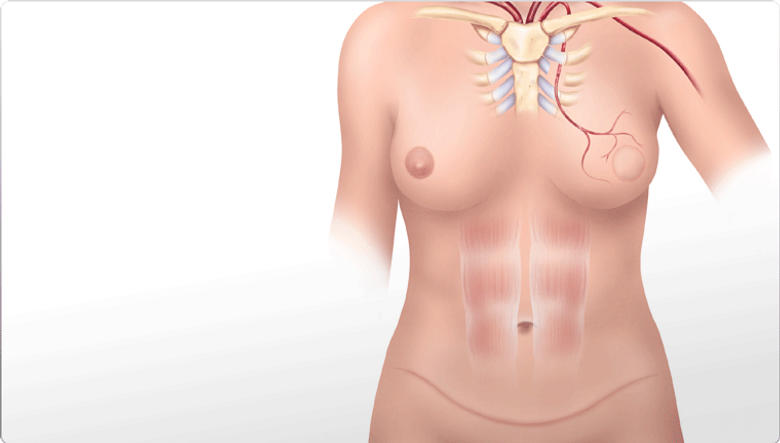


Deep Inferior Epigastric Perforator Flap (DIEP)
Deep Inferior Epigastric Perforator Flap (DIEP)

1. Overview
The deep inferior epigastric artery perforator flap utilizes the tissue and fat from the abdominal area, however the rectus muscle is left intact.
The risk of developing a post-operative bulge or hernia is therefore significantly reduced.

Before the surgery you will be marked as if you are having a "tummy tuck."
The incision pattern on the breast varies.

During the procedure, small vessels from the deep inferior epigastric artery that perforate through the rectus muscle are identified.

One to two of these perforators are then traced through the rectus muscle to their origin from the deep inferior epigastric artery. The skin and fat from the abdomen is then removed with the vessel(s) leaving the rectus muscle intact.

After the flap has been completely dissected it consists of skin, fat and a blood vessel.

The flap is then transferred to the chest wall. The vessels that supply blood to the flap are then sewn to the internal mammary artery and vein which lie under the ribs next to the sternum. A small (2cm) portion of the third rib costal cartilage is removed to reveal the underlying vessels. A microscope is then used to help the surgeon visualize the vessels so that they can be sewn together.

At the end of the surgery there is a scar from hip to hip, a scar around the belly button and scars on the breast that vary depending on breast size.

2. Preoperative Considerations
The typical candidate for the DIEP surgery is a woman with no previous abdominal surgeries and extra skin and fat on the abdomen.
Patients that are not candidates for this type of surgery include (not all-inclusive):
Patients that smoke
Patients with a history multiple abdominal surgeries
Patients with very little fat on the abdomen
Patients with a history of a clotting disorder
Patients with a BMI > 32. Click here to calculate your BMI.

3. Surgical Considerations
One-sided surgery:
The surgery is 6-8 hours long. Patients stay in hospital for 3 - 5 days and require frequent checks of the flap by the ward nurses to evaluate blood flow. Drains are required in the breast as well as the abdomen and these are usually removed on post-operative day 7.
Two-sided surgery:
The surgery is 10-12 hours long. Patients stay in hospital for 5 days and require frequent checks of the flap by the ward nurses to evaluate blood flow. Drains are required in the breast as well as the abdomen and these are usually removed on post-operative day 7.

4. Postoperative Considerations
Patients are unable to drink caffeine for one month after the surgery and must take aspirin once per day for a month.
Following surgery patients are restricted from exercise or heavy activity for a period of 4 weeks. A soft bra is worn 24 hours per day for the first 4 weeks. Nipple reconstruction is performed 3 months following flap surgery.

5. Possible Complications
Total flap failure due to a blood clot (1-2%)
Wound healing complications (15%),
Hematoma (5%)
Infection (1-2%)
Seroma (15%)
DVT/PE (0.25%)
Umbilical necrosis (0.5%)
